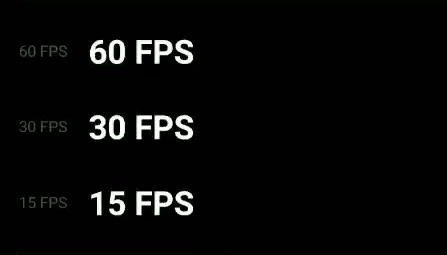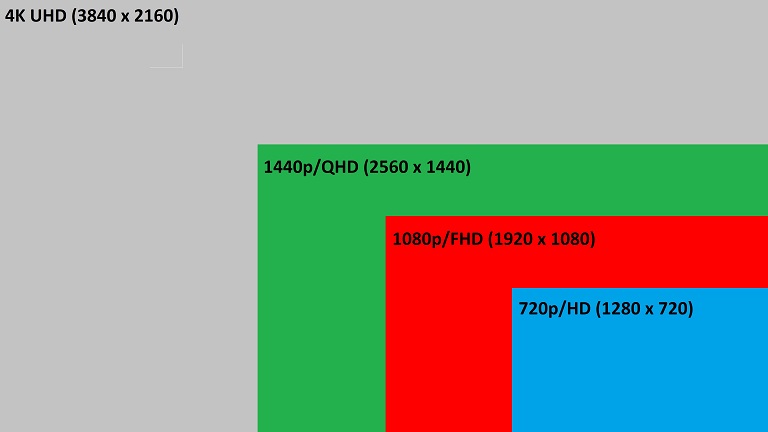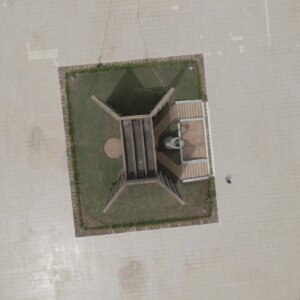
On Experience Africa Today, the minimum accepted resolution from content creators and contributors is 4K resolution at 30 frames per second. Why? Even to begin with, what do those numbers even mean?
4K
4K is a number to roughly represent the number of pixels (picture elements) shown on a screen, on the horizontal axis. That’s a bunch of gibberish, maybe. Let’s unpack that. A pixel is a single point of light of your screen. Each pixel, can be made to be of any color. When a bunch of the pixels light up in different colors together, we get to see them as images on our screen.
The laptop I’m typing this message on at the moment has a horizontal pixel count of 1,920. As in, from top left of the screen, to top right, there are 1,920 individual dots of lights. On a 4K screen, the pixel count is 3,840 instead. If you round 3,840 up, you get, 4,000.
K comes form the Greek kilo which means a thousand. Thus 4K, which loosely refers to the number of pixels of whatever screen you’re looking at, on the horizontal axis.
‘But my screen is vertical and horizontal. How about the vertical?’, you ask. Well, for a 4K screen, for a 16:9 aspect ratio, the vertical is made up of 2160 pixels. Thus, when asked for a screen resolution, one can state, 4K, which means 3,840 by 2,160 or 3,840 x 2,160, or even 2,160p.
4K refers to the horizontal, and saying xxxx-p refers to the vertical pixel count.
What’s an aspect ratio? When you divide the horizontal by the vertical, you get the aspect ratio of a screen. The aspect ratio of an image is the ratio of its width to its height.
3,840 divided by 2,160 is 1.77777778, which is equal to 16 divided by 9, easily written as 16:9
Below is a fun short video with a bit more history and details on the pixels.
30fps
30 frames per second. A frame in video-speak basically means 1 image. 1 frame = 1 image. Therefore, 30 frames per second, means, for every second, the screen shows 30 images.
This happens fast enough, that we perceive the images to be “moving”. Every video is made up of images, that are slightly different from their previous.
So why 30fps? Why not 10fps? Well, any frames per second, lower than 24 is easily noticed by the human eye. Such videos look a bit choppy and will appear not “smooth” to us. The lower the frame rate goes, the more choppy a video becomes.

Source: JP Video Productions
Just like 24 fps is smoother than 15 fps, 30fps is slightly better than 24 fps. Although many drones allow for tripod mode shoot, which makes for really smooth and creamy shots, shooting in 30fps offers an extra opportunity to slow down a bit more to 24 fps during post-production.
Such extra slo-mo effect in post-production will be discussed in a future article.
At Experience Africa Today, we go with a minimum of 30fps for all the drone shots, so as filmmakers and or video editors will have an extra option for slowing down their footages, or the very least, get a relatively smoother shot.
So why 4K at 30fps?
Inasmuch as many content is consumed today on phones at 480p (height of 480 pixels) or on Laptop/Desktops at 1080p (FHD) quality, 4K offers a solid starting point for filmmakers and editors to play around with composition and framing of their shorts.
With more resolution means more room for creativity. That is what this platform seeks to offer with all the stock footages available in our collection. We want to make the highest quality possible available, thus 4K 30fps.
Any footage you get from Experience Africa Today, you can assured of the highest possible quality, which means you have more room to be creative for your projects.
Conclusion
In a future article, will discuss why majority of our footages (99.9%) are in Flat Profile. What is Flat Profile and why does one need it?






